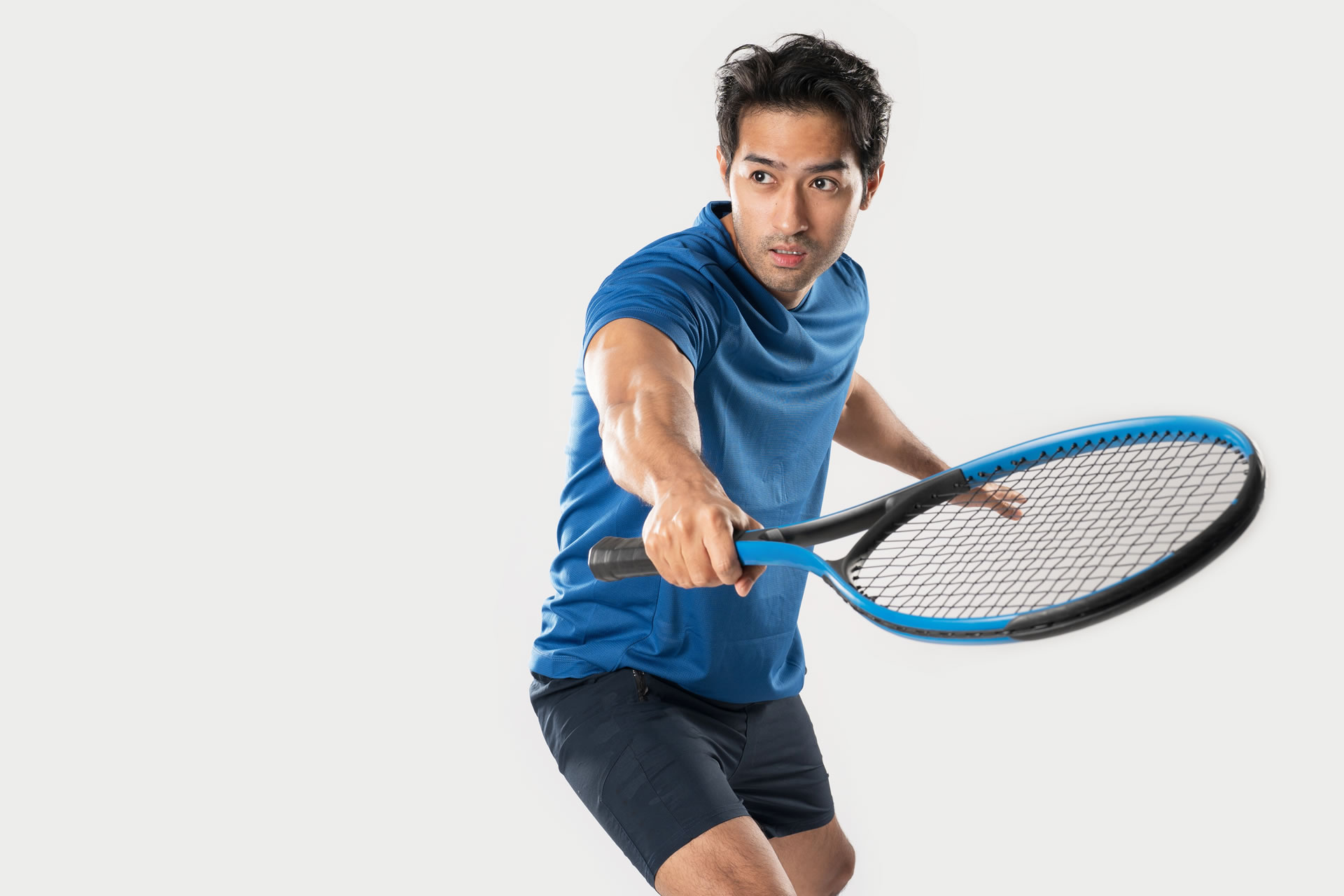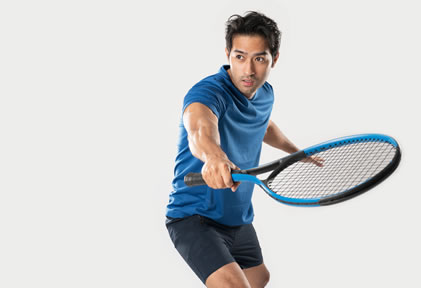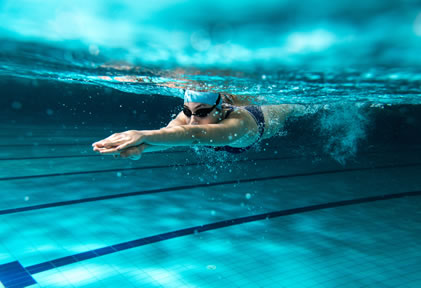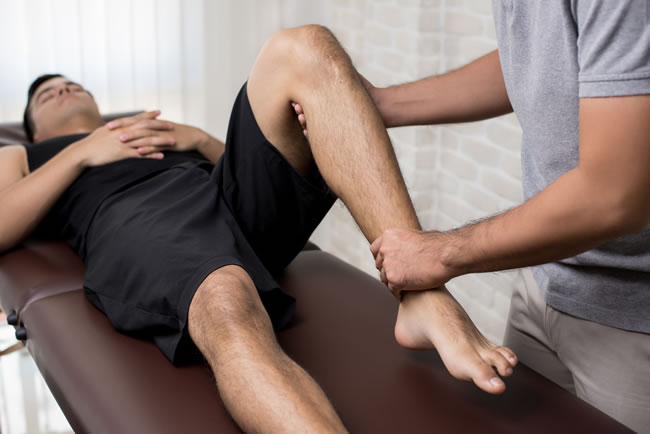Tennis
Don’t Lose to the Top Seeds of Tennis Injuries
The sun is shining, the strawberries are ripening and the tennis season is upon us! The tournaments held at the Queen’s Club and The All England Club in London are just around the corner, inspiring many of you to get back out on court (if you’re not already).
Many people presume that tennis elbow is the number one tennis injury, and to those who haven’t played regularly over the winter and who start with too much of a bang, it is a main contender.
However, for regular tennis players (and many other people who lead active lives) the top seed in the injury rankings is the ankle sprain before moving onto some helpful hints for both treating as well as preventing tennis elbow injury.
1
The Ankle Sprain
The sudden sideways movements, quick lunges and changes in direction can cause the ankle to twist, particularly if the surface is slippery or the player is fatigued. A sprain is defined as a tearing or partial tearing of the ligaments that connect bone to bone and help stabilise the joint.
On the inside of the ankle (medial side), the joint is stabilised by a thick, strong fibrous ligament called the deltoid ligament. Sprains to this ligament are very uncommon. However, on the outside of the ankle (lateral side), the joint is stabilised by three smaller ligaments. Sprains to any of these ligaments (inversion sprains, foot twisting inwards) account for more than 80% of all ankle sprains.
Proven Risk Factors:
- Previous or existing ankle injury especially if poorly rehabilitated
- Lack of strength and stability related to the ankle
- Lack of, or extreme flexibility in the ankle (laxity or unstable ankle joint)
- Poor balance
- Sudden change in direction
- Increasing age of players.
Other Risk Factors:
- Poor condition of the playing surface
- Inappropriate, inadequate, or no warm-up
- Wearing inappropriate footwear
- Lack of external ankle support (taping or bracing) for previously injured ankles.
Signs and Symptoms
A twisted ankle causes damage to ligaments and other soft tissues around the ankle. The damage causes bleeding within the tissues, which produces a swollen ankle that can be extremely painful.
Swelling and bruising can move into the foot and toes, and even upwards above the ankle. Sprains are graded on a scale of 1 to 3 (mild, moderate, and severe), depending on the degree of tearing to the ligaments.
2
Tennis Elbow
Overuse injuries most often affect the upper limb (elbow, shoulder and wrist) and are due to the high-velocity and repetitive arm movements required in tennis. The good news is that these injuries can often be prevented with some changes to technique, equipment and sometimes training routines.
Tennis elbow, also known as lateral epicondylitis, occurs in about 40% of all tennis players, generally more commonly in players aged between 35 and 50. Acute tennis elbow is an injury to the muscles and tendons that extend (straighten) the wrist and fingers. The site of the pain is typically the lateral epicondyle, a bony bump on the outside of the elbow where these muscles attach via the extensor tendon.
Symptoms
The tennis elbow sufferer will experience pain when performing gripping tasks or resisted wrist/finger extension. Pain can also be present when the muscles are stretched. There will be tenderness directly over the bony condyle and tender points (trigger points) in the muscles. Some people may also suffer from neck stiffness and tenderness, and signs of nerve irritation. Most elbow movements are pain-free despite the surrounding area being painful.
Causes
Acute tennis elbow is caused by damaged muscle tissue at the point it anchors to the arm at the elbow, also known as the ‘extensor tendon’. It occurs when more force is applied to that area than the normal healthy tissue can handle.
For example:
- Unaccustomed hand use such as starting the tennis season too quickly (ie. playing too often for too long when re-starting the season)
- Excessive gripping or wringing activities, or possibly using a new racket or different grip size
- Poor forearm muscle strength or tight muscles
- Poor technique (such as a biomechanical inefficient tennis shot).
Chronic (or longer-term) tennis elbow is associated with degenerative changes in the extensor tendon. Although a sudden acute flare of tennis elbow may have some inflammatory response and swelling, chronic tennis elbow is now known not to be due to inflammation. Chronic tennis elbow is associated with changes in the nerves and blood supply to the tendon, as well as changes in the actual tendon structure resulting in the breakdown of the tendon tissue.
Tennis elbow should be diagnosed by a physical therapist or doctor. A history is taken and clinical tests are performed. Referred pain from the neck and reduced nerve mobility can mimic tennis elbow. The physical therapist should check your neck and clear it from any involvement in your elbow pain. An ultrasound scan or MRI are the best tests to identify tendon damage although are usually unnecessary.
Treatment
Untreated tennis elbow can last anywhere from 6 months to 2 years. Physical therapy can however be very effective in both the short and long term. Massage therapy will relieve pain and help lengthen and stretch tight muscles and structures. Manual therapy can mobilise joints in the elbow and around the neck to ensure normal function. Exercise therapy can be prescribed to strengthen and balance the muscles of the forearm; and stretches given to lengthen muscles and relieve pressure on nerves. Taping and braces are beneficial in reducing pain in the elbow and supporting the muscles when you return to sport. Ice and ultrasound therapy may be used to reduce inflammation. Dry needling can also be effective for pain relief, releasing trigger points in the muscle and promoting tissue healing.
Tennis elbow unfortunately has a knack for recurring. It’s important to try and identify what caused the injury and address these issues, a physical therapist may also be able to help with this.
A quick note on grip size: Make sure your racket has the correct grip size and the size and weight of your racket based on your needs and ability. A professional can help you to choose the right racket. If the grip is too small you tend to squeeze the handle excessively to prevent it slipping or moving in your hand and this can overstress the muscles of the forearm and lead to tennis elbow. Check out this link for some guidance on grip size http://spxj.nl/2qvQ9F9. Talk tennis with your local physical therapist so you can play this season in Grand Slam form without any early retirements.
The information contained in this article is intended as general guidance and information only and should not be relied upon as a basis for planning individual medical care or as a substitute for specialist medical advice in each individual case. ©Co-Kinetic 2019.
Click here to view the Tennis elbow advice sheet
Click here to view the Tennis elbow, rehabilitation exercise sheet
The Big Six Sports Injuries
Running
The high rate of running injuries makes focusing on prevention key. If you can prevent injuries, you’ll be able to run more consistently, reach a higher weekly mileage, do more challenging workouts – and ultimately, race a lot faster for longer.
Skiing
There’s no doubt about it, snow sports are fun. Whether you’re hurtling down the side of a mountain at 40 mph, or exploring backcountry terrain; snow sports always involve excitement, adventure and exhilaration.
Golf
Basic cardiovascular fitness is essential. Regular walking, running or cross-training on a stair machine, elliptical trainer, swimming, and cycling are all ways to improve general fitness.
Tennis
The sun is shining, the strawberries are ripening and the tennis season is upon us! The tournaments held at the Queen’s Club and The All England Club in London are just around the corner, inspiring many of you to get back out on the court.
Cycling
There are two main types of cycling injury, those caused by falling off (which we don’t discuss below) and the issues caused by overtraining, biomechanical stresses, often due to muscle imbalances, and incorrect bike set-up.
Swimming
Swimming is one of the most popular sports in the world. We swim in the sea, pools, lakes, streams, rivers and even ponds. And given that 70% of the Earth’s surface is water, we’re not short of opportunities.
Start your journey to a healthier, stronger body today!
RESTORATION
Once we have got you to a stage where you injury is healed, we then give you a rehabilitation programme to restore your strength and enable you to resume your sporting activities.
prevention
Are you currently engaging in sport but worried about getting injured in the future? Why not work with us so we can help get your body strong and supple to minimize any disruption to your exercise routine?
Exercise Login
Comprehensive exercise programmes specific to you.













